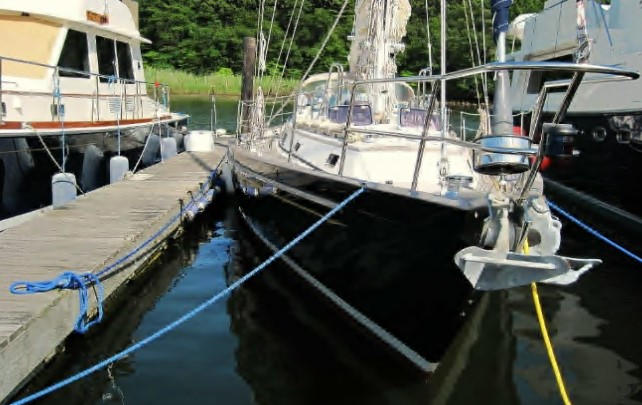Which Of The Following Is Recommended When Docking Your Boat
 Which Of The Following Is Recommended When Docking Your Boat
Which Of The Following Is Recommended When Docking Your Boat As boat owners, we all know the importance of proper docking procedures. Doing it right can make the difference between safe and fun boating and a hazardous outing. With that in mind, here are the top recommendations which are always recommended when docking your boat:
Check for Obstacles
Before attempting to dock your boat, always survey the area to make sure there are no obstacles in the way. This includes buoys, submerged logs, swells, other boats, and any other items which may block or impede your docking path. If possible, have a spotter in order to fully clear the way before coming into the dock.
Use Fenders
Fenders are a great way to protect the hull of your vessel from scratches and bumps that are common when docking or mooring your boat. It is also important to evenly distribute the stresses and pressures that come with docking so as to prevent hull damage from concentrations of strain. Fenders can help spread the load and serve as an initial barrier between your vessel and dock.
Securely Tie-off your Boat
It is also important to use the proper knots so that your boat stays in its position when you’re not around. Using the wrong type of knots could result in your boat coming away from the dock or even drifting away during high winds or strong tides. To ensure your boat stays securely tied off, use reliable knots such as the ‘sheet bend’ or the ‘bowline’.
Monitor Conditions
It is important to keep an eye on the weather and other conditions such as the tide and wind. These factors can significantly affect your docking ability so it’s important to dock when the conditions are favorable. That way you can have a much easier time bringing it in.
Use Fenders and Dock Lines
Fenders and dock lines should be used in tandem to get your boat to the dock and to keep it there. Fenders minimize impact between the hull of your boat and the dock by providing a cushioning layer between the two. Dock lines are used to secure the boat so that it can be safely and securely moored.
Communicate with Crew and Dock Master
It is important to coordinate with the dock master and other crew members in order to ensure the docking is going smoothly. Instructions from the dock master and directions from other crew members should be followed as precisely as possible for the best result.
Maintain Control
It is essential to remain in control of your boat and maintain your position in the water at all times when coming into the dock. If you lose control, either by stalling or hitting something, have another person hop aboard to take the helm until the situation is resolved.
Use Reverse Thrust
If at any time you find you are too close to the dock, do not attempt to suddenly lurch away as this may cause damage. Instead, place the engine in reverse and bring the boat away from the dock slowly. This will allow you more time and space to make a safe maneuver.
Anchor if Necessary
Sometimes due to strong currents, there may be a need for an anchor when coming into the dock. In some cases, it is also helpful to drop an anchor when making a maneuver after docking. The anchor will help to provide a stable mid-point and can aid in making a successful docking.
Have Patience
Finally, remain patient and keep a level head when docking. If you find things aren’t going as planned or if you become frustrated, it is best to take a deep breath and assess the situation before attempting a maneuver. Most importantly, be conscious of your surroundings and use caution when docking.
By following these recommendations when docking your boat, you can make sure your outing is safe and enjoyable for everyone on board. With the proper preparation and attention to detail, docking your boat can be a stress-free process.
Post a Comment for "Which Of The Following Is Recommended When Docking Your Boat"